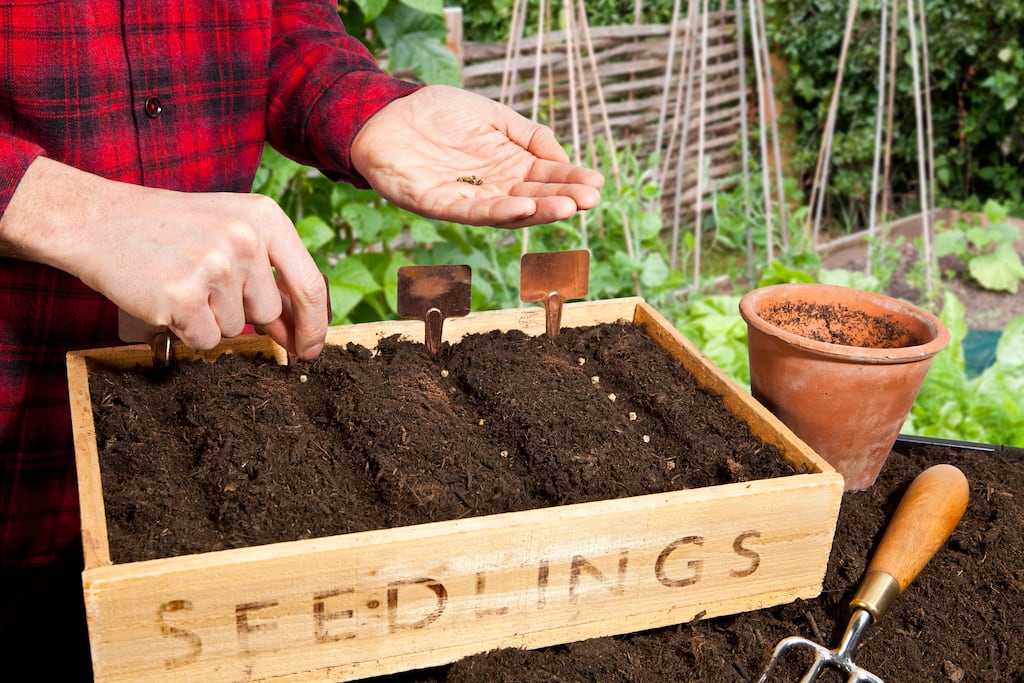For gardeners who love to raise their plants from seed, the beginning of March is not unlike the build-up to Christmas. There’s lots of hustle and bustle, with flurries of intriguing parcels from favourite suppliers arriving in the post, accompanied by the making of wish lists and enthusiastic sorting of essential tools and equipment.
This is to say nothing of the tingling, endorphin-filled sense of anticipation that comes at this time of year. In our mind’s eye, we can already see it all in full and bonny growth. Those garden walls draped with swathes of scented sweet pea, those flower beds filled with pretty blooms, those neat vegetable patches heaving with home-grown produce. But before you plunge headlong into the crazy, joyful, life-affirming mayhem of it all, a few words of advice from a fellow seed addict who knows how easy it is to get quickly carried away.
First and foremost, resist the urge to sow and plant too early in the season. Hardy annuals, for example, can be sown now under cover of a frost-free glasshouse, polytunnel, cold frame, bright porch or sunny windowsill indoors in a cool, bright room. But with the exception of unusually hardy species such as broad beans, it’s best to hold off direct sowing seed outdoors for another couple of weeks unless your garden or allotment enjoys particularly mild conditions and/or is well sheltered.
This is especially true this spring, after months of heavy rain that have left most soils cold and waterlogged, creating conditions unfavourable to germination.
READ MORE
Examples of popular hardy flowering annuals include pot marigolds (Calendula); love-in-a-mist (Nigella, best direct-sown); sweet pea (Lathyrus odoratus); cornflowers (Centaurea cyanus); Queen Anne’s lace (Ammi majus and Ammi visnaga, best direct sown); corncockle (Agrostemma githago, best direct sown); and Orlaya grandiflora. Examples of hardy annual species of vegetables include beetroot, broad beans, cabbage, kale, carrots, parsnips, Swiss chard and leeks.
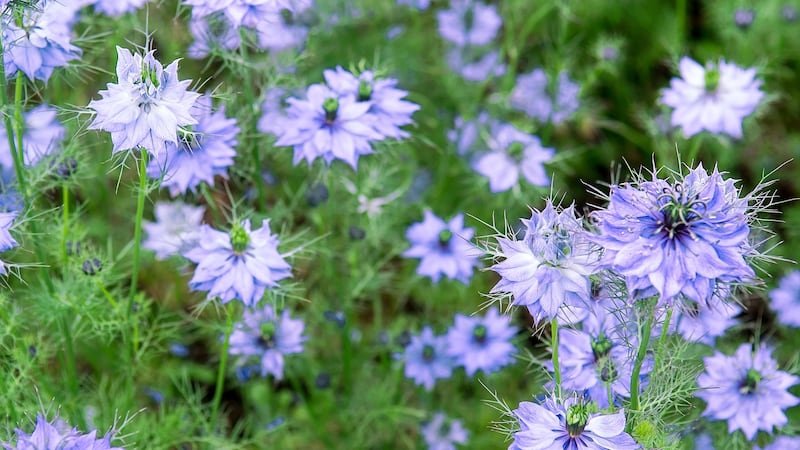
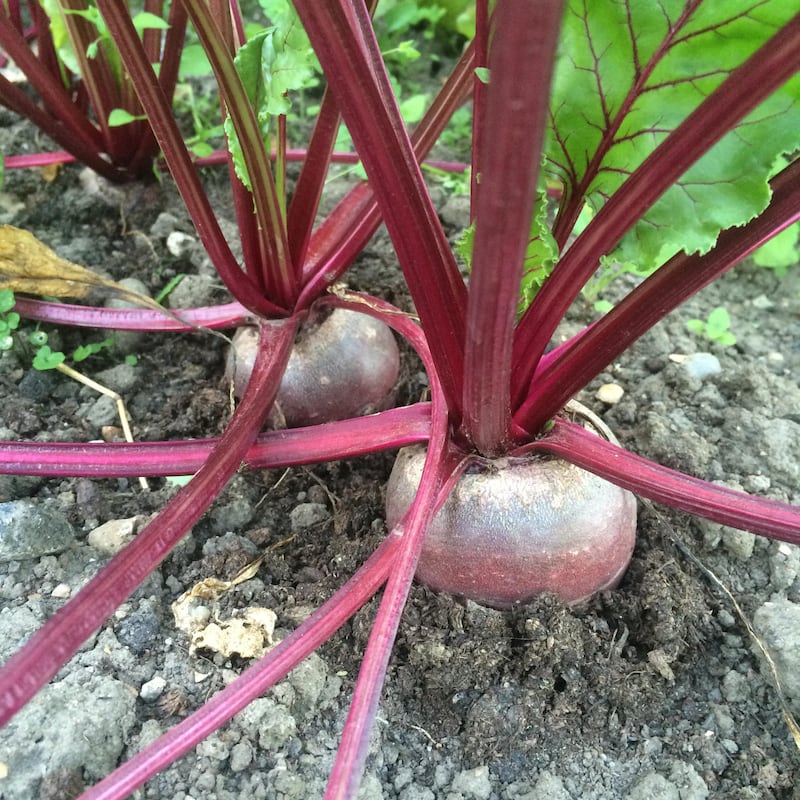
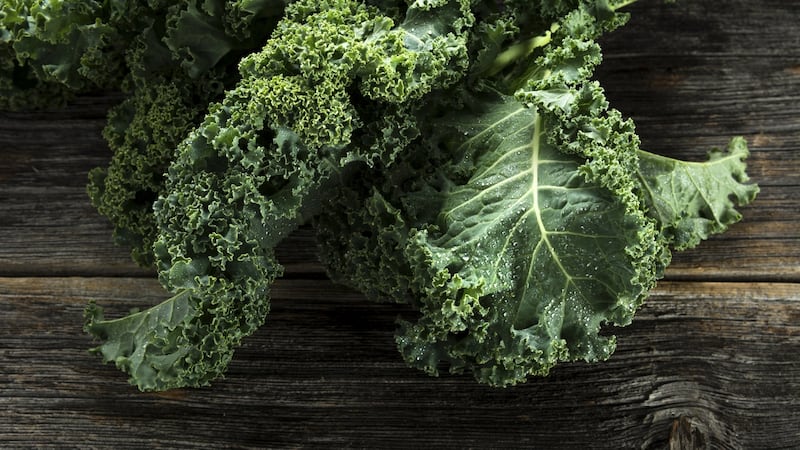
Half-hardy annuals are another matter entirely. These fast-growing, heat-loving species resent low temperatures as young seedlings and should only be planted outdoors into their permanent positions in the garden or allotment in early summer after all risk of frost has passed. For this reason, they’re best sown in seed trays, small pots or modules under cover and with gentle heat from mid-March (for gardeners in the mildest parts of the country) to mid-April (for gardeners in the coldest parts of the country), ideally using the bottom heat of an electric propagator to boost initial germination.
[ The war on garden slugs: I’m coming for youOpens in new window ]
If you plan on growing them permanently under cover of a polytunnel or a glasshouse, then you can of course sow them earlier. In fact, certain heat-loving, frost-tender crops traditionally grown under cover, such as tomatoes, aubergines, peppers and chilli peppers need an early start to crop well in Ireland. But you’ll still need to protect the young plants from the threat of cool temperatures, which typically ends in late May.
Do you really, for example, want to give valuable growing space to a crop that you don’t like?
On the other hand, if you plan on direct-sowing seed of certain half-hardy annuals outdoors into their permanent growing positions in the ground (always a gamble), then hold off sowing seed until mid-May and be very vigilant in terms of the threat of slugs, snails, birds and mice as well as late frosts and cold winds, all of which can seriously damage the emerging seedlings.
This means keeping some horticultural fleece to the ready, netting vulnerable crops, and using some form of organically acceptable control against slugs and snails, timing its application carefully for maximum effect.
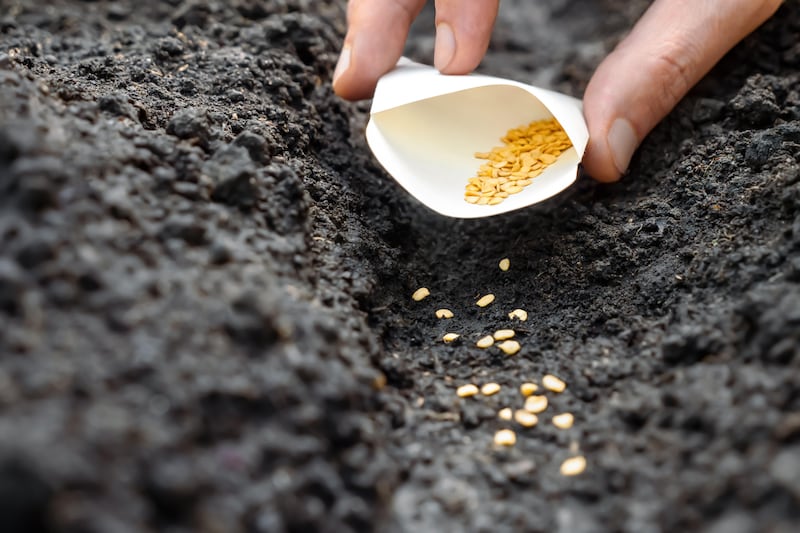
Examples of popular half-hardy flowering annuals include French marigolds (Tagetes), love-lies-bleeding (Amaranthus), cosmos, rudbeckia (Rudbeckia hirta), tobacco plant (Nicotiana), statice, sunflowers (Helianthus annuus), Morning glory (Ipomaea), and nasturtiums. Examples of half-hardy vegetables include lettuce, courgettes, sweetcorn, cauliflower, celery and French beans.
[ Forget carrots, tomatoes, peppers: Here are the best vegetables to growOpens in new window ]
Many kinds of hardy flowering perennials can also be sown now under cover, but again, do bear in mind that the young seedlings will continue to need the protection of a bright, cool but frost-free space while they develop sturdy root systems and naturally harden off over the coming months. Examples suitable for sowing in this way include granny bonnet (Aquilegia), yarrow (Achillea), Scabiosa ochroleuca, ornamental thistle (Eryngium), Verbascum, toadflax (Linaria) and coneflower (Echinacea).
Careful timing of sowings aside, it’s important to be realistic about how many young seedlings and transplants you can accommodate, not just temporarily under some sort of cover in the weeks ahead, but also as plants in your garden or allotment. The most common mistake (mea culpa here too by the way) is to sow a full packet of seeds, only to guiltily realise that there’s only enough growing space for a fraction of the resulting seedlings, with the surplus eventually ending up as sad discards on the compost heap.
Try, also, to be clear-eyed about the growing conditions you can offer. There’s little point in giving time, space, energy and misplaced hope to a species such as sunflowers (Helianthus annuus) that demands a very warm, sheltered, sunny spot, for example, when your garden is exposed and windy, or cool and shady. The only result will be disappointment.
[ Top 10 plants to bring a burst of colour to your gardenOpens in new window ]
Likewise, be clear-eyed when it comes to selecting the most useful varieties of vegetables for the kitchen garden or allotment. Do you really, for example, want to give valuable growing space to a crop that you don’t like (turnips, in my case) or which is easily available to buy as an organically grown vegetable in your local shop (carrots, for example), or which is tricky to grow, space-consuming and slow to crop (take a bow, celeriac)? Do you like courgettes enough to give each plant the square metre or so of ground it needs to be properly productive? If your kitchen garden is a tiny one where crops are grown in window boxes and containers, does it make sense to grow a space-hogging, relatively unproductive crop such as sweetcorn (the answer is almost certainly not).
Don’t doom yourself to failure by sowing or transplanting young seedlings into poorly prepared, cold, compacted, weedy ground
Some species or varieties of plants are also naturally more time-consuming and labour intensive, another quality to bear in mind when it comes to narrowing down your must-grow shortlist. Cordon-type tomatoes, for example, are a particularly high maintenance crop that needs very careful site selection (a polytunnel or glasshouse is best), careful watering, liquid feeding, staking and side-shooting plus ventilation on hot sunny days – tumbling types of tomatoes much less so. Similarly, sweet pea needs a well-prepared, deep, rich, cool, moist but free-draining soil, sturdy support, careful training/tying in of their long brittle stems and regular picking to thrive. By comparison, other hardy flowering annuals such as English marigolds, nigella, clary sage, Californian poppy (Eschscholzia californica) and orlaya are far less demanding.

Plant selection aside, don’t doom yourself to failure by sowing or transplanting young seedlings into poorly prepared, cold, compacted, weedy ground. Instead, now is the time to prep it in advance. So long as the soil isn’t waterlogged or frozen, start by hoeing and hand-weeding existing beds as soon as possible. Then leave them for a few weeks to allow any dormant weed seeds in the soil to germinate, before hoeing these away and then covering it with a light layer of home-made garden compost to help replenish lost nutrients.
If the bed is empty, follow this with a layer of horticultural fleece or a sturdy sheet of black plastic. Pegged down securely, this will raise the soil temperature in advance of sowing and planting, helping to boost germination and growth rates.
For an instant new flower or vegetable bed into which you can directly sow seed or transplant seedlings, cut/strim down any existing vegetation, dig out roots of any woody plants, then spread a layer of cardboard and wet it well. Finish off by adding a 20cm deep, gently firmed layer of good-quality top soil, into which you can work a little home-made garden compost and/or one of the commercially produced products available from Irish companies such as mulch.ie and landscapedepot.ie . The result – pure heaven to have it – will be the perfect seed bed.
This week in the garden
- Early March is a good time of the year to plant rhubarb, an exceptionally long-lived perennial plant that’s very tolerant of benign neglect, and will continue to provide a delicious crop for many decades after it was first planted.
- Rhubarb likes a cool, rich, moist but free-draining soil in full sun or light shade. Recommended varieties prized for their flavour include the late- and long-cropping ‘Victoria’, and the early-cropping, delicious ‘Timperley Early’.
- March is traditionally one of the best times of year to divide large or overgrown clumps of many kinds of summer-flowering perennials, a wonderful way to build up your stock of favourites as well as to propagate plants to give to family and friends. Use a border fork or spade to lift and divide these clumps (a sharp saw is useful for very dense clumps) , before quickly replanting them into their new positions in the ground or potting them on, labelling them and giving them a generous watering.
Dates for your diary
- Wednesday, March 20th (7.30pm-9pm), Memoir of a Woodland Garden, a Zoom talk on behalf of the RHSI by Michael White, gardener, writer, expert propagator and former curator of Mount Congreve gardens, see rhsi.ie
- Sunday, March 24th (11am-4pm), RHSI Bellefield gardens, Shinrone, Co Offaly, RHSI Plant Fair 2024, with tours of the garden by head gardener Paul Smyth at 12pm and 2pm, see rhsi.ie
- Also Sunday March 24th, (9.30am-1pm), The Grinding House, June Blake’s Garden, Tinode, Blessington, Co Wicklow, Learn How to Grow Your Own Cut Flowers for Free from Seed, Cuttings and Division, a hands-on plant propagation half-day workshop with Fionnuala Fallon, see https://www.eventbrite.com/o/fionnuala-fallon-74563213293 or @theirishflowerfarmer for booking details
- See our new project Common Ground, Evolving Islands: Ireland & Britain
- Sign up for push alerts and have the best news, analysis and comment delivered directly to your phone
- Find The Irish Times on WhatsApp and stay up to date
- Our In The News podcast is now published daily – Find the latest episode here
